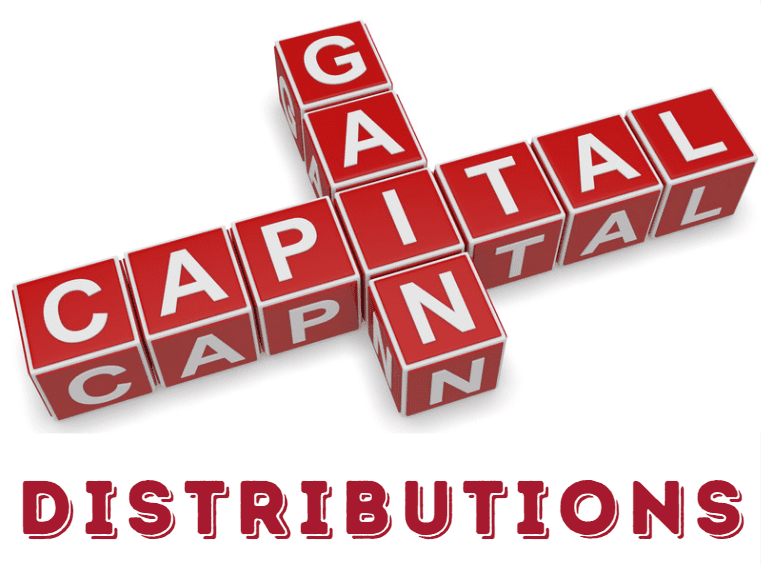As typically occurs at year-end, some of the funds in your SYM portfolio are expected to pay capital gains distributions in December. Because such distributions may impact your 2023 tax planning, we’d like to offer some thoughts about the process.
Because mutual funds do not pay taxes, they must pay realized gains and income to shareholders in cash.
As required by law, mutual funds distribute all realized capital gains and dividends on an annual basis. Since mutual funds do not pay taxes themselves, they pass any such gains and income to individual shareholders by way of cash distributions. If you are a shareholder and hold your shares in taxable accounts, you must report all such distributions as income on your tax return and pay the applicable taxes. Barring unusual circumstances, your custodian will aggregate these distributions for you on a 1099-DIV tax form.
Because capital gains distributions are paid in cash, year-end mutual fund price declines can be mistakenly viewed as a drop in wealth.
If investors are unaware of the impact capital gains distributions have on prices, they may be alarmed at an apparent decline in wealth caused by distributions. It’s important to note that the distribution will not change the investor’s wealth, for better or for worse. In reality, the distribution is a simple reallocation, causing the account’s cash balance to increase dollar-for-dollar on the distribution date as the mutual fund’s share price decreases.
Distributions don’t always imply absolute gains or losses.
A fund can end the year with a gain or a loss and still make a distribution. This usually occurs when a fund is finally forced to realize market gains from earlier years. However, because most online stock charts and their corresponding prices do not adjust for distributions, any price decline will generally be misrepresented as an absolute decline, even when there has been little or even positive change in the total return of the fund. For a more accurate measure of performance, look to total return (which includes capital gains and dividend distributions) rather than historical price change.
Years of outsized stock market appreciation can generate larger capital gains distributions, and distributions are often smaller in years of market decline. In 2023, capital gains distributions are average, and half of the funds in the SYM investment lineup are planning to distribute this season.
If any of these funds are present in your portfolio, your custodian will aggregate the taxable gain distributions. There is no action for you to take at this time. However, if you have any questions about these upcoming distributions or their impact on your tax planning, please do not hesitate to contact your SYM advisor or reach out here to be introduced to a SYM advisory team.




